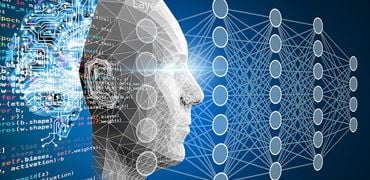Top 10 Machine Learning Python Libraries for Beginners and Experts

According to Fortune Business Insights, the global Machine Learning (ML) market is currently valued at $21.17 billion and is expected to reach $209.91 billion by 2029 at a compound annual growth rate of 38.8%. There couldn’t be a better time for data scientists to learn in-demand coding skills while the market is expanding exponentially. One crucial coding ability that professionals in this field must pick up is machine learning Python skills. We explore information related to applying Python programming in machine learning to help you build the required knowledge and expertise in coding to help take your career to the next level.
What is Meant by Python Machine Learning?
Machine learning is a branch of artificial intelligence (AI) that enables computers to learn from experience and automatically perform tasks without being explicitly programmed. Python is a coding language used in programming and is characterized by a vast array of features, a wide range of applications, and simplicity.
Python in ML involves various Python machine learning libraries, which include the methods and functions to scale mathematical and scientific computations to speed up ML operations. These frameworks enable programmers to create machine learning models faster without learning the intricate details of base algorithms.
Machine Learning Python Example
An example of Python in ML includes the PyBrain, a modular machine learning Python library that provides easy-to-use algorithms to streamline ML workflows. The best and most reliable coding solutions require a proper structure and pre-tested environment, which is available within the framework of this library.
ALSO READ: What is Python Coding? The Ultimate Guide
The Purpose of Python in Machine Learning
According to a February 2022 Statista research, Python is the fourth (48.07%) most-used programming language among developers worldwide, surpassing a number of other languages such as PHP, C#, R, JavaScript, and Java. Developers and data scientists can construct complicated machine learning models without rewriting lengthy chunks of code by using a Python-based machine learning package. Moreover, several AI, ML, and deep learning applications frequently use a Python machine learning library, such as TensorFlow and Theano.
Simply put, the purpose of Python in ML is to provide a code repository for defining, developing, and deploying machine learning models through prebuilt libraries that streamline operations and accelerate application development.
How to Use Python in Machine Learning
To get started with ML using Python, you need to get familiar with the Python data set repositories available online and how to retrieve code from them.
Trivially, you can get those data sets by downloading them from the web using a browser, via the command line, or through network libraries. These ML libraries have set benchmarks for retrieving complex data sets. They are, therefore, extremely beneficial, especially if you are looking to build machine learning models without coding from scratch.
However, the Python data sets are frequently not delivered with the libraries; instead, they are downloaded in real-time when you invoke the functions. Therefore, in order to use them, you must have a reliable Internet connection. For example, Scikit-Learn is a machine learning Python library where you can download the data set using its Application Processing Interface (API).
Top 10 Python Machine Learning Libraries
With an understanding of the purpose of a machine learning Python library and how to use one, let’s now focus on the top 10 libraries to use in 2023.
1.TensorFlow
This free and open-source library is utilized to perform mathematical operations. In 2015, the Google Brain research team developed this extensive math library for use in large-scale systems and neural network applications. The library supports probabilistic techniques like Bayesian models and gives its users access to various distribution functions like Bernoulli, Chi2, and Gamma.
Benefits of TensorFlow include scalability, superior graphical representations, frequent updates and feature releases, easy library management, and compatibility with GPU and ASIC. Moreover, companies like Airbnb, PayPal, and Twitter use TensorFlow extensively.
2. PyTorch
PyTorch is a free, open-source library used for computer vision and natural language processing applications. Meta’s AI research team created this library, and many companies, such as Uber, Walmart, and Microsoft have since adopted it. For instance, Uber created Pyro, a deep learning application that performs probabilistic modeling using PyTorch.
3. Keras
Keras is an independent open-source machine learning Python library that is suitable for neural network calculations. It facilitates faster experimentation as the library is modular, easy to interpret, and extensible. Moreover, this library offers a complete toolkit that significantly improves the efficiency of handling text and image data. Essentially, this is why companies like Uber, Netflix, Square, and Yelp favor Keras over other libraries for managing their text and image data.
4. Orange3
Orange3 is an open-source machine learning, data mining, and data visualization tool. Researchers at the University of Ljubljana in Slovenia first created this tool using the C++ programming language in 1996. Owing to the growing demand for more elaborate modules, professionals started applying Python modules to the previously developed library to improve it.
5. NumPy
NumPy (Numerical Python) is an open-source Python library designed to support scientific and mathematical computations. Additionally, the library consists of different mathematical functions (such as math.fsum and math.frexp). It also allows complex computations, including multidimensional arrays and matrices.
6. SciPy
The SciPy library is appropriate for scientific and technical tasks that primarily include mathematical computations, much like the NumPy library. It is also known to support image manipulation operations.
7. Scikit-Learn
Scikit-Learn is a free ML library that is fast and has a user-friendly API. It is built on SciPy and has functionalities for data classification, data clustering, and regression algorithms. In fact, the library supports top ML algorithms such as Support Vector Machines, Random Forest, K-Means, and Gradient Boosting. It also has a developer community that can offer assistance when a user encounters issues while using the library.
Currently, the Scikit-Learn library is popular on GitHub and is used by several companies across various industries, such as Spotify (online music streaming) and Booking.com (hotel reservations).
8. Pandas
Pandas is primarily designed to perform data manipulation and analysis. The library comes in handy during data set preparation before the training phase as it provides a variety of data structures, functions, and components that help in data extraction tasks.
9. Matplolib
Similar to the Pandas library, Matplolib is used for data visualization, where programmers can derive insights from the visualized data patterns. Some of its functionalities, such as Pyplot, adjust line styles and manage fonts while plotting 2D graphs and plots.
10. Theano
Mathematical models are manipulated, assessed, and optimized by the Theano Python library. It was created in 2007 to formulate and execute mathematical expressions by the Montreal Institute for Learning Algorithms (MILA) at the University of Montreal. The library uses multidimensional arrays to process these expressions.
ALSO READ: 5 Best Books on Python for Beginners and Experts in 2023
Is Python Good For Machine Learning?
The following reasons make Python is good for machine learning:
1. Simple and Easy to Learn
The Python language provides descriptive and interactive code that is easy to learn, interpret, and comprehend. Additionally, this makes the language an ideal choice for entry-level developers who are learning to code. Moreover, the simplicity of the Python library enables programmers to create reliable machine learning models.
2. Platform-Independent Language
Python is a platform-independent programming language. In essence, this implies that the language can execute programs across various operating systems, such as Linux, Windows, and macOS, without the need for a Python interpreter on specific operating systems.
3. Community Support
A Python library is easy to implement and integrate with other tools. The library is also open to everyone and does not require any particular skills to access them. Moreover, Python community support makes the libraries ideal for beginner-level coders as the members can share, discuss, and resolve code issues and collaborate with each other as and when required.
Get Started with a Machine Learning Python Course
Wondering how to dive into the world of machine learning by using Python? Enhance your coding skills with Emeritus’ online coding courses, offered in association with the world’s top universities. Enroll in our machine learning courses to get hands-on knowledge of Python libraries. Moreover, you can build essential job-ready skills to add to your resume and prove your coding competency.
Write to us at content@emeritus.org


















